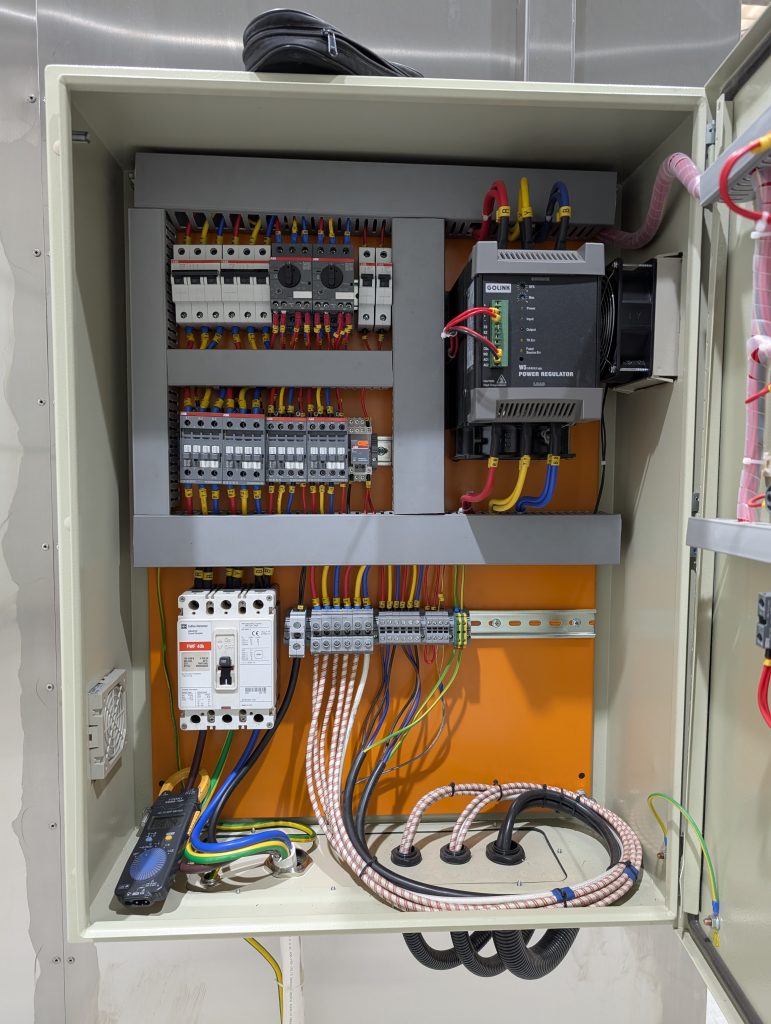Electrical Control Panel Components
A control panel is a box that contains electrical components required to run a factory machine or process. A typical industrial control panel component list includes:
- Breakers, suppressors, & fuses
- Power distribution
- Power supply
- Communications
- Motor drives
- Terminal blocks
- Relays & contactors
- HMI
- Transformer
- Wire duct & DIN rail
- Enclosure, backplate, & grounding panels
The control panel also goes by the name of PLC panel, with PLC short for programmable logic controller. This means the PLC is basically an industrial-grade computer, and that high voltage and high stakes are at play with many of these components.
Part-by-Part Electronic Control Panel Component Overview
No two applications and environments are identical, but here’s what you can expect to see in an electrical control panel.
Circuit Breakers, Surge Suppressors, & Fuses
- What? Components that detect excess electrical flow and open or break the connection to stop the current.
- Why? To prevent systems from power surges and storms.
- Where? Throughout the panel.
Circuit breakers keep a connection from short-circuiting or overloading. The various styles all keep operations calm from an amperage standpoint.
- Main breakers handle 120V–480V in most industrial applications. A common landing spot for these in-panel designs is the top of the enclosure since that’s where power typically enters the panel.
- Branch breakers prevent short-circuiting (and, in some uses, overload) for each load, such as heaters and motors.
- Supplementary breakers provide extra protection for high-priority control components and devices.
An industrial PLC panel may include other parts with similar (but less comprehensive) functions.
Surge suppressors are in place to protect against short-circuiting due to voltage (rather than amperage). This is the component that’ll stop or reduce havoc downstream in the panel if a lightning strike or power surge occurs (but it won’t prevent overload).
Fuses stop an electric circuit from overloading in times of high current. These have a one-time function, once they activate, they become an open circuit and require replacement. They don’t protect against short-circuiting.



